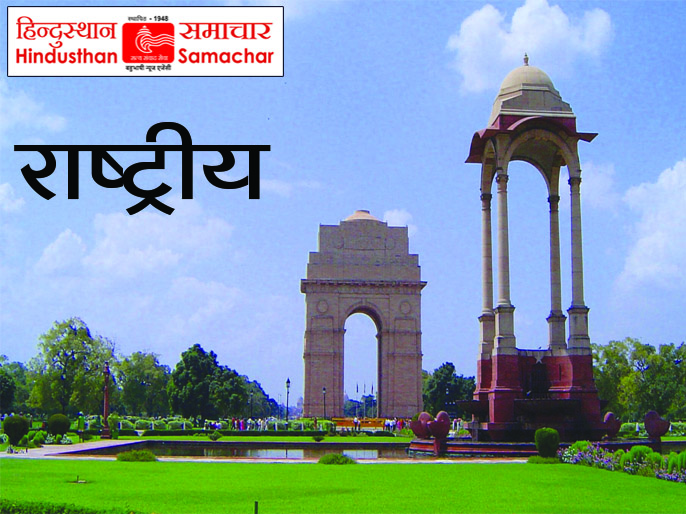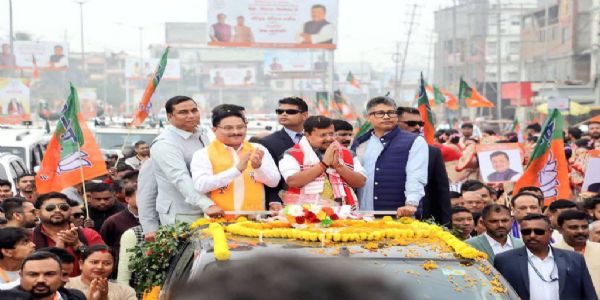
Delhi, 4 March (H.S): Finance Minister Nirmala Sithraman on Monday said that documentation always existed in the Indian civilisation. Wherever digging takes place idols of gods are found as they serve as historical records which are now accepted by the courts, said Sitharaman.
Sitharaman urged upon historians for documentation which can stand the judicial scrutiny. She said this after unveiling the book -- Waiting for Shiva unearthing the Truth of Gyan Vapi -- authored by eminent historian Vikram Sampath.
Sitharman spoke of the history of Kashi, saying that the city was rebuilt everytime it was attacked, beginning with Qutub ud Din Eibak in the 11th century to the times of Mughal Emperor Aurangzeb.
She made references to literary records of Chinese and Persian travellers' documenting the history of Kashi.
Speaking about Gyan Vapi, Sitharaman quoted the lawyer Vishnu Shankar Jain that once a temple is always a temple because our living supreme beings are inside them. Sitharaman stressed that Hindus worship the temples as abodes of living Gods. She gave example of Nathdwara in Rajasthan.
Sitharaman said that we are blessed that three of our holiest Hindu religious places -- Ayodhya, Kashi, and Ujjain -- are being reconstructed and revitalized during our lifetime.
She commended the author, Dr Vikram Sampath, for documenting the civilisational history of India throughhis book on Gyan Vapi.
Sitharaman said that we cannot leave it to others to distort our history.
She noted that for thousand years documentation was lost or scattered. She mentioned that documentation had existed in forms of stone engraving, palm leaf, copper plates, and oral traditions.
Sampath after the release of the book said that it is the burden of historians to bring out the truth of Gyan Vapi to the masses. He noted that the story of Gyan Vapi is not known to the people unlike Ayodhya even while Hindus continuously struggled to reclaim the religious place.
The book, published by BluOne Ink, was launched at PM Museum in New Delhi on March 4 2024.
ABOUT THE BOOK
Historian Vikram Sampath has dug out historical records to spotlight that the Sardar’s (Vallabhbhai Patel, India’s first union Minister for Home Affairs) Somnath restoration project remains incomplete without restoring the Kashi Vishwanath Temple to its glory while asserting that Gyanvapi is an integral part of the ‘Shiva jyotirlinga’ holy place.
Sampath’s book – Waiting for Shiva, Unearthing the Truth of Kashi’s Gyanvapi – quotes from the court proceedings in a 1936 case filed by Din Mohammed and others against the Government of India to conclude that the Gyanvapi Mosque was illegal as per the Islamic jurisprudence while the place being an integral part of the age-old religious customs of the Hindus. Sampath quotes from the court verdict, which was also upheld by Allahabad High Court in 1942, which ruled – “…the very appearance of the ruins indicated that there existed a temple before the construction of the mosque; …according to the strict Islamic laws, the mosque was not legal…as consent of the Hindus was not taken to either build the mosque or offer prayers at the spot that belonged to Hindus.
Sampath states in the book that the civil judge S. B. Singh and Krishna Chandra, who had heard the Din Mohammed versus Govt. of India case, made references to the book by E. B. Havell, Bernares: The Sacred City (1905), where he writes “…at the back of the mosque of Aurangzeb (Gyanvapi Mosque), near the Golden Temple (Vishwanath), is a fragment of what must have been a very imposing Brahmanical or Jain temple”.
Sampath argues in the book that Din Mohammed case deposition by the Muslim sides ended up admitting demolition of several hundreds of Hindu temples in Varanasi by the Muslim rulers, beginning with the advent of the Qutb-ud-din Aibak and extending to the years of Aurangzeb. Sampath quotes the submission of then Secretary of State for India in Council, filed by R. V. Vernede, arguing that “the idols and the temple , which stand there (Gyanvapi) existed since long before the advent of Islamic rule in India”.
Samapth attributed the judge in the 1937 court judgment saying, “…the compound in which the mosque stands is that of the Gyan Vapi. In this compound, to the south of this mosque, there still exists that well , which is worshipped by Hindus as the primaeval source of knowledge…there is no reason to doubt that the mythological well is the same, which is to the south of the mosque in this very compound.”
Sampath further spotlights the collective efforts from all parts of the country for the revival and the restoration of Kashi of the past with Ahilya Bai, the Maratha ruler of Indore, taking the lead for restoration of the Kashi Vishwanath Temple, which was afterwards supported by Maharaja Ranjeet Singh of Punjab and others.
Sampath further makes claims in the book that the idea of the restoration of the Hindu temples, conceived by Sardar Patel, which faced destructions at the hands of the Muslim rulers for over 400 years had the approval of Mahatma Gandhi. To support this claim, Sampath quotes from the speech of Gandhi made in the Banaras Hindu University in 1916 when he expressed anguished at the narrow and filthy lanes of the Kashi Vishwanath Temple.
Sampath writes: “The idea (to resurrect other important jyotirlinga) had Gandhi’s approval too, though he preferred the finances to be raised through public funding and not through government expenses.”
The book revisits the communal faultlines in Varanasi, including the Hindu-Muslim riots of 1809-10 known as ‘Lat Bhairo Riots’ to spotlight on history’s unresolved legacy challenge. Sampath quotes from ‘The Benares Gazetteer’, which wrote on the riots which raged for two years: “The chief source of friction was the mosque built by Aurangzeb on the site of the old temple of Bisheshwar; the most scared spot in the historical city.”
Hindusthan Samachar/ Indrani Sarkar







